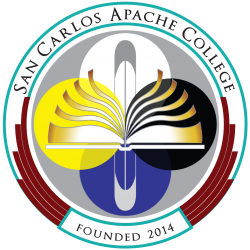Whether an instructor is creating an online course temporarily in response to an emergency, or for long-term use, helpful resources will be posted here as they are identified. For direct assistance, please email tech@apachecollege.org.
TOCC Training Series for Online Teaching
Visit this YouTube playlist to learn about the many teaching resources and technologies available to our faculty.
Planning Your Online Course
- Be Ready to Temporarily Take Your Class Online (by Stanford TeachAnywhere)
- Inclusion, Equity, and Access While Teaching Remotely (by Rice University)
- Creating an Online Classroom (by Stanford Online High School)
- How to Make Your Online Pivot Less Brutal (by Chronicle of Higher Education)
- Teach From Home resource page (by Google)
- Class Planning questionnaire template (by Tandon School of Engineering)
- Creating and Using Rubrics (by Carnegie Mellon University)
- Encouraging Academic Integrity Online (by University of Waterloo)
Using Canvas
Canvas is SCAC’s learning management system (LMS), used by classes for announcements, assignments, discussions, files, quizzes, grades.
- Access Canvas by first logging into your TOCC Gmail account at https://gmail.com and then finding Canvas at the bottom of the Google Apps tray. If you don’t know your TOCC Gmail login info, please contact tech@apachecollege.org.
- If you’re unfamiliar with Canvas, check out these Easy Video Tutorials for Setting Up Course in Canvas (about 30 minutes of content).
- How to Upload Video Files to Canvas (Tutorial Video). We highly recommend recording your videos outside of Canvas and uploading them under the Files section of your course for easy linking and file management.
- Use the Turnitin Plagiarism Checker tool that is integrated with Canvas for student submissions.
Creating Video Content
Whether you want to make to make a quick video introduction to kick off your class, or you want to convert one of your lessons into a video lecture, here are some resources to help you get started.
- How to Record Videos on Windows 10 for Free (Tutorial Video)
- How to Make an Instructional Video (25 essential tips)
Videoconferencing / Virtual Meeting Tools
Videoconferencing can be a good way to deliver a lecture or demonstrate a task remotely, host a class discussion, or participate in a study group activity. One challenge with videoconferencing is that you need a reliable and adequately fast Internet connection to enjoy a clear video chat. For some class activities, it may be advisable to consider a different communication format.
- Check out our Video Conferencing Guidelines and Considerations
- Google Meet is a videoconferencing and screen sharing tool. If you first login to your TOCC Gmail account, then visit https://meet.google.com, it is free to use, doesn’t require any additional installation, and allows unlimited recording of your virtual meetings to your Google Drive! Google Meet also supports real-time closed captioning, so that speech is converted to text on the screen immediately (but please note that captions will not be included with the recordings.) Another benefit is that the entire TOCC user directory is already built-in, so inviting students to participate is very easy.
- Zoom is another popular videoconferencing and screen sharing tool. Zoom has other powerful features, such as a virtual whiteboard, the ability to request control of someone else’s computer, and free recording to your local computer. Check it out at https://zoom.us
Screencasting Tools
Screencasting allows you to demonstrate steps and processes on the computer desktop, such as creating a tutorial on how to navigate a website or complete a specific task in a computer application. You can even use it to record a PowerPoint slideshow as you lecture on the content, and then link that video to be watched later. Click for additional creative screencasting ideas to use in your teaching.
Loom is a web service that you can use to create screencast videos. Upgrades to Loom Pro are free for education customers forever! Help guides for using Loom are located here: https://support.loom.com/hc/en-us
Screencastify is another well-known screencasting platform. Videos that are 5 minutes or shorter are free, but they are also offering an extended trial of their premium package. (You do not need to enter any payment information for this promotion, so there’s no chance of getting charged after the trial period for free unlimited video ends.) Help guides for using Screencastify are located here: https://help.screencastify.com
Here is how to sign up for the extended trial version of Screencastify for free:
- Visit https://screencastify.com with the Chrome web browser and click on My Account on the upper right of the page.
- Sign in with your TOCC Google account.
- Click the blue “Subscribe Now” button (page will say “Upgrade to Unlimited” and will show $49 per year).
- Click the gray “Redeem coupon” button below the total due.
- Enter coupon code CAST_COVID and click the red “OK” button.
- The Total Due will show $0 and you can click the blue “Activate Subscription” button and install the screencast extension on the Chrome browser.
Once you have created your screencasts, we recommend you choose to automatically save videos to your Google Drive. This would allow you to create a semester’s worth of content ahead of time and then still access those screencasts after the free trial ends.
Open Source Textbooks
Textbooks from these sources are generally collaborative efforts that are free to use and free to modify as you see fit.
- https://openstax.org
- https://oercommons.org
- https://open.umn.edu/opentextbooks
- https://researchguides.uic.edu/opentextbooks

